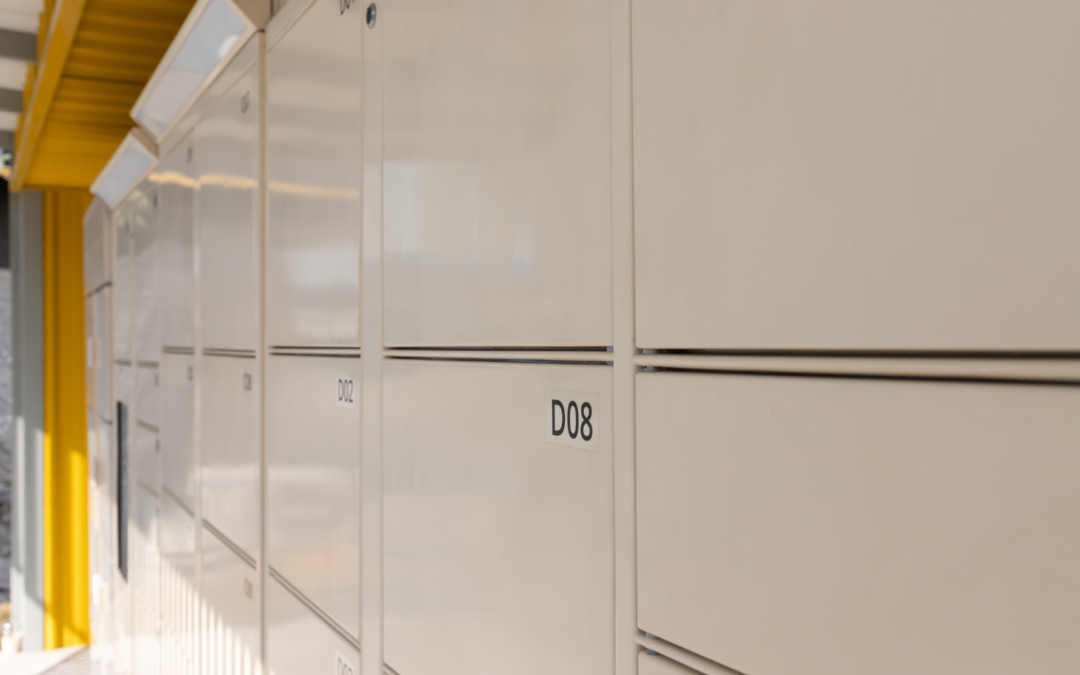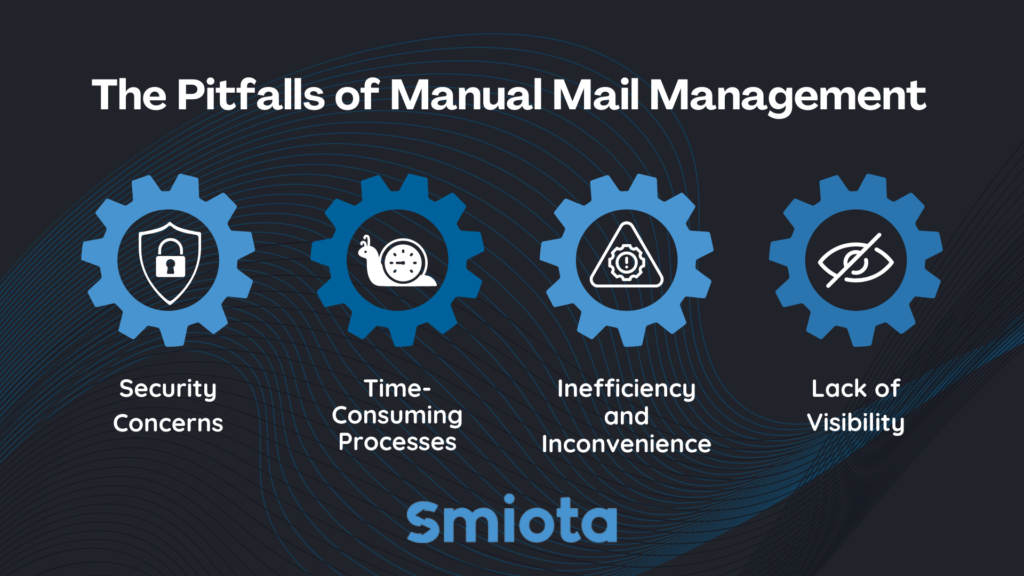Nobody likes overflowing mailrooms, frantic key searches, and frustrated residents or employees. The traditional system of managing mail and packages manually is not able to keep up with the demands of today’s fast-paced world. Whether you oversee a corporate office, a busy apartment complex, or a university campus, you need a smarter solution to handle the ever-increasing volume of deliveries.
This blog post will be your guide to implementing a smart locker system in any building. We’ll explore how to transform your mail management process into a streamlined, secure, and efficient system, enhancing the experience for everyone involved. Let’s get started!
The Pitfalls of Manual Mail Management
Let’s face it, the manual system of managing mails and packages is full of inefficiencies. Here are just a few of the major drawbacks you might be facing:
- Security Concerns: Lost keys, misplaced packages, and vulnerable mailrooms create security risks for valuable belongings.
- Time-Consuming Processes: Sorting mail, managing deliveries, and handling lost keys take up valuable staff time that could be better spent elsewhere.
- Inefficiency and Inconvenience: Overflowing mailrooms, missed deliveries, and frustrated tenants or employees are a constant struggle.
- Lack of Visibility: It’s difficult to track deliveries and ensure accountability in a manual system, leaving room for errors and delays.
Smart Lockers: A Modern Solution
Smart locker systems offer a powerful alternative, transforming mail management into a secure and convenient process. The electronically controlled lockers provide secure storage for deliveries, accessible by authorized users through PIN codes, touchscreens, or mobile apps. Here’s how to implement smart lockers in different building types for maximum efficiency:
1. Corporate Buildings
Assessment:
-
-
- Analyze employee demographics and average delivery volume.
- Determine locker size requirements based on typical package proportions (think laptops, documents, etc.).
- Consider integrating with existing access control systems (keycards, PINs) for a seamless user experience.
-
Implementation:
-
-
- Choose a centralized location with easy access for both staff and delivery personnel. Consider high-traffic areas near employee entrances or break rooms.
- Install lockers of varying sizes to accommodate all types of packages.
- Configure the system for access control based on employee credentials (ID cards, PINs).
- Provide training for employees on using the system for convenient package retrieval.
-
Benefits:
-
-
- Improved Security: Secure office lockers with personalized access codes minimize the risk of theft.
- Convenience: Flexible access schedules allow employees to retrieve packages 24/7, even outside of traditional office hours.
- Increased Efficiency: The staff is freed from time-consuming mailroom management tasks with the help of smart locker management, allowing them to focus on higher-priority initiatives.
- Boosted Employee Satisfaction: Convenient & secure package management and handling reduces frustration and improves overall employee experience.
-
2. Multifamily Apartments
Assessment:
-
-
- Consider resident demographics and typical delivery volume (online shopping habits, etc.).
- Determine the number of lockers needed based on the number of units in your building.
- Evaluate space limitations and choose a readily accessible location within the building or lobby.
-
Implementation:
-
-
- Install smart lockers in a secure, well-lit location within the building or lobby for easy access.
- Offer lockers in various sizes to accommodate different delivery types (groceries, clothes, packages).
- Integrate the system with the resident portal for access control using key fobs or mobile apps.
- Clearly communicate the system’s operation and benefits to residents through email or resident newsletters.
-
Benefits:
-
-
- Reduced Package Theft: Smart package management will secure storage and eliminate worries about stolen packages left outside doors.
- 24/7 Package Access: Residents can retrieve deliveries at their convenience, day or night with the help of an apartment parcel locker.
- Improved Staff Efficiency: Staff will spend less time managing deliveries or lost keys, leading to better resident service.
- Resident Satisfaction: Convenient access to packages increases resident satisfaction and loyalty.
-
3. Libraries
Assessment:
-
-
- Evaluate the typical volume and size of library materials being held or loaned (books, DVDs, etc.).
- Consider integrating with the library’s existing ILS (Integrated Library System) for seamless workflows.
-
Implementation:
-
-
- Install smart lockers in a designated area within the library for secure storage of library materials.
- Choose library lockers and their sizes suitable for storing the available library resources.
- Integrate the system with library cards for user access and automated check-in/out functionalities.
- Train staff on using the system for material retrieval and management.
-
Benefits:
-
-
- Improved Security: An outdoor library locker will securely store library materials, reducing loss or damage.
- Streamlined Borrowing and Returns: Users can easily pick up and return materials without waiting in line.
- Reduced Staff Burden: Staff can focus less on manual processes and more on assisting patrons and promoting library resources.
- Increased Customer Satisfaction: A convenient and efficient borrowing experience enhances patron satisfaction.
-
4. Universities
Assessment:
-
-
- Analyze student demographics and delivery volume (textbooks, online orders, etc.).
- Evaluate space availability and choose locations near student dorms, common areas, or libraries.
-
Implementation:
-
-
- Install smart lockers in multiple locations throughout the campus for wider accessibility.
- Offer various locker sizes to accommodate textbooks, course materials, and deliveries.
- Integrate the system with student ID cards or a dedicated mobile app for user access.
- Partner with campus bookstores and delivery services for seamless integration of textbook pick-up and online order delivery.
- Provide clear instructions and training for students on using these lockers for convenient access.
-
Benefits:
-
-
- Student Convenience: Students can receive and pick up packages or textbooks anytime.
- Improved Security: Secure storage reduces the risk of theft of valuable student belongings.
- Reduced Textbook Hassle: Streamline textbook pick-up for online orders or rentals.
- Increased Operational Efficiency: University staff can dedicate less time to handling package deliveries and textbook distribution.
-
5. Warehouses
Assessment:
-
-
- Analyze inventory type, size, and access frequency (high-demand items, fragile goods, etc.).
- Determine the optimal number and size of lockers needed for secure storage based on inventory analysis.
- Consider integrating with existing warehouse management systems (WMS) for optimized workflows.
-
Implementation:
-
-
- Install smart lockers strategically within the warehouse for efficient product retrieval based on access frequency and item type.
- Choose locker sizes based on the typical product dimensions stored inside.
- Integrate the system with employee access control systems for secure inventory management.
- Train staff on using the lockers for inventory control, order fulfillment, and secure storage.
-
Benefits:
-
-
- Inventory Control: Real-time tracking of stored items in lockers improves asset management and reduces inventory discrepancies.
- Increased Security: Secure storage reduces the risk of theft or product loss.
- Improved Picking Efficiency: Streamlined product retrieval from designated lockers speeds up order fulfillment.
- Reduced Operational Costs: Cost savings through better inventory control, space optimization, and improved picking efficiency.
-
6. Retail Stores
Assessment:
-
-
- Evaluate the type and volume of online order pick-up requests.
- Consider integrating with existing online ordering systems for a seamless customer experience (order confirmation, pick-up notification).
- Determine the optimal location for lockers based on customer traffic flow within the store.
-
Implementation:
-
-
- Install smart lockers in a designated area within the retail store, easily accessible to customers to enable BOPIS (Buy Online Pickup In Store).
- Offer various retail smart locker compartments in multiple sizes to accommodate different product types ordered online (clothing, electronics, etc.).
- Integrate the system with the online ordering platform for automated pick-up notifications to be sent to customers.
- Train staff on assisting customers with locating and accessing their online orders retrieved from the lockers.
-
Benefits:
-
-
- Customer Convenience: Offer a convenient option for customers to pick up online orders without waiting in line.
- Reduced Order Fulfillment Time: Streamline order pick-up process for faster customer service.
- Customer Satisfaction: Convenient order pick-up enhances the overall shopping experience and increases customer loyalty.
- Reduced Checkout Congestion: Decrease checkout lines by offering a separate pick-up option for online orders.
-
Conclusion
As you can see, a smart locker management system offers a powerful and adaptable solution for mail and package management in any building type. Whether you manage a busy corporate office, a vibrant university campus, or a modern retail store, the benefits of implementing smart lockers are plenty.
By streamlining deliveries, enhancing security, and improving user convenience, smart lockers empower you to focus on what matters most – running your business or organization smoothly and efficiently.
Now is the time to embrace a smarter solution
Smiota offers a range of smart locker solutions designed to meet the specific needs of your building. Our user-friendly systems integrate seamlessly with existing access control systems and boast robust security features. We also provide ongoing support and maintenance to ensure your smart locker system operates flawlessly.
Are you ready to transform your mail management and the experience for everyone involved? Contact Smiota today!





